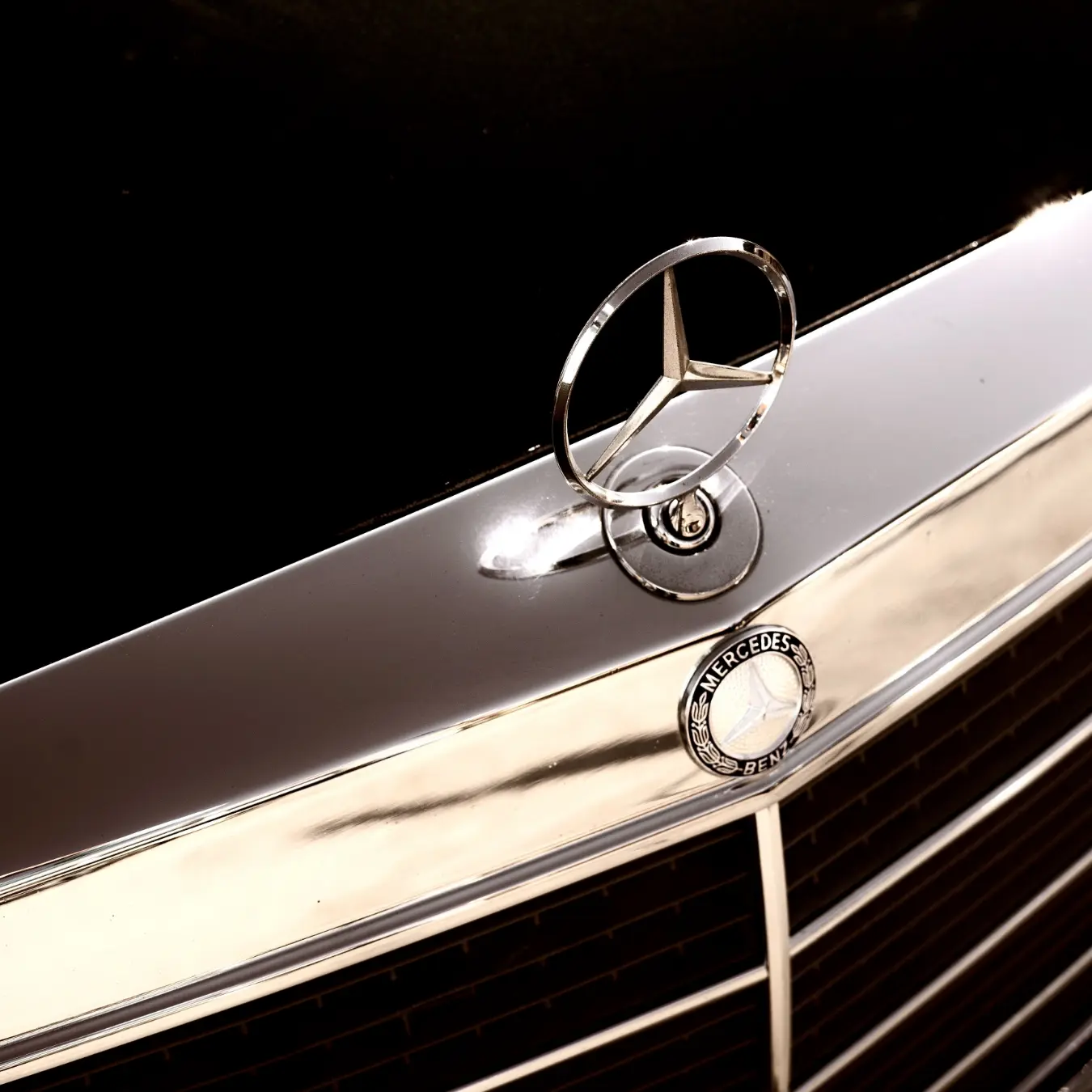Kompressor Meaning Mercedes: Understanding The Power Behind The Engine
Mercedes-Benz has long been synonymous with luxury, performance, and innovation in the automotive world. One term that frequently appears when discussing Mercedes engines is "Kompressor," which plays a significant role in enhancing engine performance. If you're curious about what "Kompressor" means in the context of Mercedes and how it impacts your driving experience, you're in the right place.
In this article, we will delve into the intricacies of the Kompressor technology, its benefits, and its role in modern Mercedes vehicles. Understanding the Kompressor meaning Mercedes can help you appreciate the engineering excellence behind these vehicles and make informed decisions when purchasing or maintaining a Mercedes-Benz.
Whether you're a car enthusiast or simply curious about the technology under the hood, this article aims to provide a comprehensive overview of Kompressor technology and its significance in Mercedes-Benz vehicles.
- Why Nunflixcom Is Revolutionizing The Streaming Experience
- X X Is Equal To 20 A Fun And Informative Journey Into Numbers
Table of Contents
- What is Kompressor in Mercedes?
- History of Kompressor Technology
- How Does Kompressor Work?
- Benefits of Kompressor Technology
- Kompressor vs Turbocharger
- Mercedes Models with Kompressor
- Maintenance Tips for Kompressor Engines
- Common Issues with Kompressor Engines
- The Future of Kompressor Technology
- Conclusion
What is Kompressor in Mercedes?
When discussing Mercedes-Benz vehicles, the term "Kompressor" often comes up. In simple terms, Kompressor refers to the supercharger technology used in certain Mercedes engines. A Kompressor is a mechanically driven air compressor that increases the amount of air entering the engine, thereby enhancing its power output and efficiency.
By forcing more air into the engine cylinders, the Kompressor allows for a more efficient combustion process, resulting in greater horsepower and torque. This technology has been a hallmark of Mercedes-Benz performance vehicles, particularly in models with the "Kompressor" badge.
Why Kompressor is Important
The Kompressor technology is crucial for achieving the balance between power and fuel efficiency that Mercedes-Benz is known for. It allows smaller engines to produce the performance of larger engines without sacrificing fuel economy.
- Unraveling The Mystery 80 Of X Is Equal To 100 20
- Why Fmovies Is Still A Big Deal In The Streaming World
History of Kompressor Technology
The origins of Kompressor technology date back to the early 20th century when superchargers were first introduced in the automotive industry. Mercedes-Benz adopted this technology in the 1930s, using it to power its racing cars and high-performance vehicles.
Over the decades, Mercedes-Benz refined the Kompressor technology, integrating it into various models. The introduction of the Kompressor badge in the late 1990s marked a new era in Mercedes-Benz performance engineering, with models like the C32 AMG and E55 AMG showcasing the capabilities of Kompressor-equipped engines.
Key Milestones in Kompressor Development
- 1930s: Early adoption of supercharger technology in racing cars.
- 1990s: Introduction of the Kompressor badge in production vehicles.
- 2000s: Widespread use of Kompressor technology in AMG models.
How Does Kompressor Work?
The Kompressor operates by compressing air before it enters the engine's combustion chambers. This process increases the air density, allowing for a more efficient combustion of fuel and air. Unlike turbochargers, which rely on exhaust gases to drive the compressor, the Kompressor is mechanically driven by the engine's crankshaft.
This mechanical connection ensures instant power delivery, eliminating the turbo lag commonly associated with turbocharged engines. As a result, Kompressor-equipped engines provide a smoother and more responsive driving experience.
Components of the Kompressor System
- Compressor Unit: The core component responsible for compressing air.
- Intercooler: A cooling system that reduces the temperature of the compressed air, enhancing efficiency.
- Belt Drive: Connects the Kompressor to the engine's crankshaft for mechanical operation.
Benefits of Kompressor Technology
The Kompressor technology offers several advantages that make it a preferred choice for performance-oriented drivers:
- Increased Power: Kompressor engines deliver higher horsepower and torque compared to naturally aspirated engines of similar size.
- Instant Acceleration: The mechanical drive eliminates turbo lag, providing immediate power response.
- Efficient Performance: By allowing smaller engines to produce more power, Kompressor technology contributes to improved fuel efficiency.
Kompressor vs Turbocharger
While both Kompressor and turbocharger technologies aim to enhance engine performance, they operate differently:
Kompressor: Mechanically driven by the engine's crankshaft, ensuring instant power delivery without turbo lag.
Turbocharger: Uses exhaust gases to drive the compressor, which can result in a slight delay in power delivery (turbo lag).
Comparison Table
| Feature | Kompressor | Turbocharger |
|---|---|---|
| Power Source | Mechanical | Exhaust Gases |
| Lag | No Lag | Turbo Lag |
| Efficiency | High | High |
Mercedes Models with Kompressor
Several iconic Mercedes-Benz models have featured Kompressor technology, including:
- C32 AMG: A compact performance sedan with a 3.2-liter supercharged V6 engine.
- E55 AMG: A luxury performance sedan equipped with a 5.4-liter supercharged V8 engine.
- SL55 AMG: A high-performance roadster with a powerful Kompressor engine.
Performance Highlights
These models not only deliver impressive performance but also showcase the engineering prowess of Mercedes-Benz. The combination of Kompressor technology and AMG tuning results in vehicles that offer both luxury and exhilarating driving dynamics.
Maintenance Tips for Kompressor Engines
To ensure the longevity and optimal performance of Kompressor-equipped engines, regular maintenance is essential:
- Regular Oil Changes: Use high-quality oil suitable for supercharged engines.
- Air Filter Replacement: Keep the air filter clean to maintain proper airflow.
- Intercooler Inspection: Check the intercooler for any signs of damage or blockage.
Common Issues with Kompressor Engines
While Kompressor technology is robust, certain issues can arise over time:
- Belt Wear: The belt driving the Kompressor can wear out, requiring periodic replacement.
- Seal Leaks: Oil leaks from seals may occur, necessitating repair or replacement.
The Future of Kompressor Technology
As the automotive industry shifts towards electrification and hybrid technology, the role of Kompressor engines may evolve. However, Mercedes-Benz continues to innovate, integrating advanced technologies to enhance performance and efficiency.
Future developments may see the integration of electric superchargers, combining the benefits of instant power delivery with the efficiency of electric systems.
Conclusion
Understanding the Kompressor meaning Mercedes opens a window into the world of high-performance engineering and innovation. From its historical roots to its modern applications, Kompressor technology has played a pivotal role in shaping the performance landscape of Mercedes-Benz vehicles.
Whether you're considering purchasing a Kompressor-equipped vehicle or simply curious about the technology, this article has provided a comprehensive overview of its significance. We invite you to share your thoughts and experiences in the comments below and explore other articles on our site for more insights into the world of automotive technology.
References:
- Mercedes-Benz Official Website
- Automotive Engineering Journals
- AMG Performance Documentation
- Why Is The Limit Of Sinxx Equal To 1 And Why Does It Matter
- Hdhub4u Guide To Downloading Movies Legal Alternatives In 2025

MercedesBenz Logo History Meaning MercedesBenz Of Modesto, 54 OFF

Star In A Ring The True Meaning Of The Mercedes Logo

What Is The Meaning Of the Names Of Different MercedesBenz Classes?